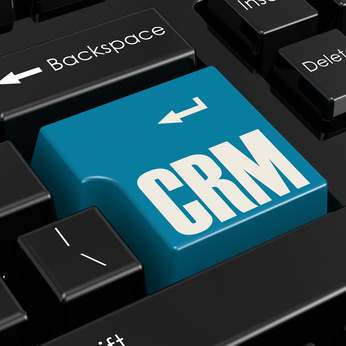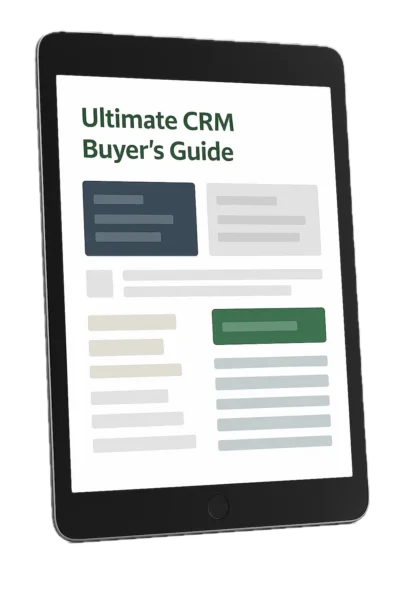With the prolific adoption of CRM systems over the last several years, there has been an ever-increasing need to find qualified people to take on CRM administration duties.

For larger organizations, “CRM Administrator” is often a full-time job. For smaller companies, CRM administration can be one of many areas of responsibility for the person assigned to the role.
In either case, CRM administration can be a new set of responsibilities for many people. Here are eight best practices to consider for anyone new to the role.
1. Stay On Top of Data Cleanliness
CRM data can get dirty quickly. Duplicate record creation and loose data entry standards both contribute to the problem.
A combination of ongoing user training and technically enforced data entry formats can ensure that the right data is entered in the right fields. For example, entering notes into a phone number field should never be possible.
If your CRM system has duplicate avoidance capabilities, ensure this functionality is configured properly. Also, use native CRM functionality or a third-party tool to scan for suspected duplicates regularly. Institute a merge/purge process.
2. Make The Interface Relevant to Each User
One of the many factors that can increase user adoption levels is a clean and relevant experience.
For each group of users (sales, support, operations), remove tabs and fields that don’t apply to people in that functional role. Globally remove default fields from the layouts that do not apply to your business model.
A “less is more” approach to screen layouts will keep a user’s attention focused on the key information they need to view and maintain.
Information will be easier to find through search. Reports will be more complete and meaningful.
3. Take Advantage of the Relational Capability of CRM
A manufacturer or distributor may want to track each customer’s on-prem equipment.
A commercial property management company may want users to view what properties are associated with each customer easily.

We’ve seen cases where a new CRM administrator has created a series of repeating “flat” fields such as Property 1 Address, Property 2 Address, Property 3 Address, etc.
A better way to track this related information is to create what is variously called a custom table, entity, or object — depending on the CRM vendor. Records in these custom tables can be linked to a parent record — in this case, the customer record.
With a “child” table, multiple attributes of the equipment (serial number, cost) or property (category, # of units) can be tracked. Also, unlike with repeating flat fields, users are not limited to the number of related records they can create.
4. Obtain Consensus Before Adding New Fields
With great power comes great responsibility.
It’s very easy for a CRM administrator to create new fields. Because of this, fields can sometimes be added to a CRM system with little forethought and no internal discussion.
Before adding a new field, it’s important to run the rationale for the new field by a stakeholder or a power user. Obtain buy-in from the person whose team will maintain that field.
5. Retire Old CRM Users and Create New Ones
When a user leaves the organization and a new user record needs to be added to CRM, the old user record should not be simply updated with the new user’s name and email address.
This is because all the old user’s past emails and activities will be associated with the new user.
An old user should be retired or deactivated so their license is freed up and their name is associated with all their past activities.
6. Annotate Your CRM Configurations
Whether you’re adding a custom field, creating an email template, or setting up a workflow, make sure to key in the purpose of adding or modifying the associated notes or description field.
The reason for a modification might be clear to you and obvious at the moment. But down the road, you may not remember exactly what the purpose of the configuration was. If the reason is not apparent to you, it certainly won’t be clear to others.
If your CRM system does not have an annotation field, create a parallel document that notes modifications and the reasons behind them.
7. Track Changes to Key Fields
If your CRM allows for tracking changes to specific fields, enable this functionality for phone number fields, currency fields, and any other fields for which you want the ability to view previous values and see which user updated a field to a new value.
If a field’s value is replaced with an incorrect value, it’s easy to view and restore the previous value(s).
When field changes are tracked, reports can be run to view trends such as an opportunity’s value progression over time.
8. Create Backups of Your Data
What would you do if someone accidentally deleted a company record along with all its related contacts and all those contacts’ historical activity, including email communication?
Even though your CRM vendor likely creates backups, if your database ever needs to be restored, you would lose any changes that were made by users since the most recent backup occurred.
If your CRM has an export service, create regular data backups.
CRM administration involves a range of important responsibilities. There is a set of best practices, which, if followed on an ongoing basis, will optimize the user experience, increase user adoption and result in more meaningful reporting.




